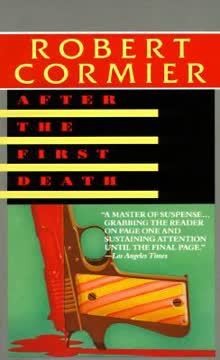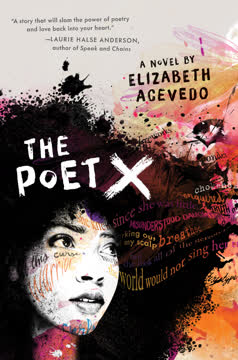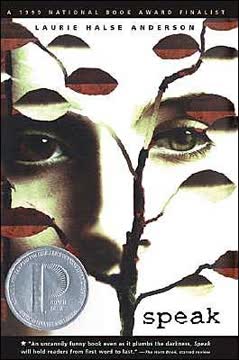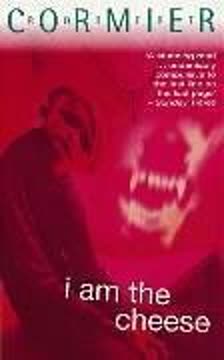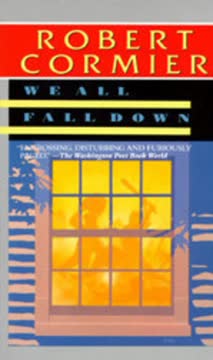Plot Summary
The Bridge's Dark Secret
A school bus carrying young children is hijacked by terrorists led by Artkin, a cold and calculating leader. Miro, a young recruit, is tasked with killing the driver but hesitates when he discovers the driver is a girl named Kate. The terrorists take the bus to an abandoned bridge, using the children as hostages to demand the release of political prisoners and the dismantling of a secret government agency, Inner Delta. As the day progresses, the children are drugged to keep them quiet, and tensions rise as the terrorists await a response to their demands.
A Father's Hidden Agenda
Ben Marchand, the son of a high-ranking military official, is unwittingly drawn into the crisis. His father, General Mark Marchand, is deeply involved in the situation, using Ben as a pawn in a larger strategy to outmaneuver the terrorists. Ben is sent to deliver a stone to the terrorists as proof of their leader's capture, unaware that he is being used to mislead them about an impending military attack. The weight of his father's expectations and the reality of his role in the operation weigh heavily on Ben.
The Innocence of Monsters
Miro, a young terrorist, grapples with his role in the hijacking and his feelings for Kate. Raised in refugee camps and trained for violence, Miro is torn between his duty and the human connection he feels with Kate. As he watches over the children and interacts with Kate, he begins to question the path he has been set on, even as he remains committed to the cause. His internal struggle highlights the complexity of his character and the innocence lost in the pursuit of a violent ideology.
A Desperate Gamble
As the situation on the bridge becomes increasingly tense, Kate seizes an opportunity to escape with the children. She manages to start the bus and drive it backward, but the attempt is thwarted by the terrorists. Despite her failure, Kate's bravery and determination to protect the children shine through. Her actions force the terrorists to reconsider their plans, and the situation becomes even more precarious as the authorities prepare to intervene.
The Cost of Patriotism
Ben is captured by the terrorists and subjected to intense interrogation. Under duress, he reveals the planned military attack, believing he has failed his father and his country. However, it is later revealed that his father had intended for Ben to divulge this information as part of a larger strategy. The revelation leaves Ben feeling used and betrayed, questioning the true cost of patriotism and the lengths to which his father was willing to go for the sake of the mission.
The Final Confrontation
As the military launches its attack, chaos erupts on the bridge. Artkin is killed, and Miro is left to fend for himself. In the confusion, Miro takes Kate hostage and flees into the woods. Despite his injury, Miro is determined to escape, but Kate's attempts to reach his humanity ultimately fail. In a moment of desperation, Miro shoots Kate, sealing his fate as a lost soul consumed by the violence he was raised in.
The Aftermath of Betrayal
Alone and wounded, Miro reflects on the events that have transpired. He grapples with the realization that Artkin, who may have been his father, is dead because of his actions. As he contemplates his next move, Miro is left with the haunting knowledge that he has become the very monster he once feared. The story ends with Miro's uncertain future, a testament to the destructive power of violence and the innocence lost in its wake.
Characters
Ben Marchand
Ben is the son of General Mark Marchand, unknowingly used as a pawn in his father's strategy to outmaneuver the terrorists. His journey from innocence to betrayal highlights the personal cost of patriotism and the moral complexities of war. Ben's internal struggle and ultimate realization of his role in the operation leave him questioning his identity and the true meaning of bravery.
Miro
Miro is a young recruit, torn between his duty to the terrorist cause and his growing feelings for Kate. Raised in refugee camps and trained for violence, Miro's internal conflict and moments of vulnerability reveal the innocence lost in the pursuit of a violent ideology. His journey is marked by a struggle to reconcile his humanity with the monstrous path he has been set on.
Kate Forrester
Kate is the young bus driver who becomes an unexpected hero in the crisis. Her bravery and determination to protect the children shine through as she attempts to escape and reach Miro's humanity. Despite her ultimate fate, Kate's actions highlight the power of courage and the impact of personal sacrifice in the face of overwhelming odds.
Artkin
Artkin is the leader of the terrorists, driven by a ruthless commitment to his cause. His interactions with Miro and the other terrorists reveal a complex character, capable of both cruelty and a twisted sense of mentorship. Artkin's death marks a turning point in the story, leaving Miro to grapple with the consequences of his actions and the loss of a father figure.
General Mark Marchand
General Marchand is a high-ranking military official, deeply involved in the crisis. His decision to use Ben as a pawn in the operation reveals the moral complexities of his character and the lengths he is willing to go for the sake of the mission. His relationship with Ben is marked by a tension between duty and personal sacrifice, leaving both father and son to question the true cost of patriotism.
Raymond
Raymond is one of the children on the bus, notable for his intelligence and awareness despite the dire situation. His interactions with Kate provide moments of hope and humanity amidst the chaos. Raymond's tragic fate serves as a poignant reminder of the innocence lost in the violence and the personal cost of the terrorists' actions.
Plot Devices
Dual Narratives
The story unfolds through the dual narratives of Ben and Miro, providing contrasting perspectives on the hijacking and its impact. This narrative structure allows readers to explore the moral complexities of the situation and the personal struggles of the characters, highlighting the themes of innocence, betrayal, and the cost of violence.
Psychological Tension
The psychological tension in the story is driven by the internal conflicts of the characters, particularly Ben and Miro. Their struggles with identity, loyalty, and morality create a sense of suspense and emotional depth, drawing readers into the complexities of their experiences and the broader implications of the crisis.
Symbolism of the Bridge
The bridge serves as a powerful symbol in the story, representing both the physical site of the hijacking and the metaphorical divide between the characters' worlds. It highlights the themes of conflict, connection, and the choices that define the characters' paths, ultimately serving as the backdrop for the story's climactic events.
Analysis
"After the First Death" delves into the psychological and moral complexities of terrorism, patriotism, and personal sacrifice. Through the dual narratives of Ben and Miro, the story explores the impact of violence on innocence and the personal cost of ideological conflict. The characters' internal struggles and the symbolic use of the bridge highlight the themes of identity, loyalty, and the choices that define us. In a world marked by political and social upheaval, the story serves as a poignant reminder of the human cost of conflict and the power of personal courage in the face of overwhelming odds.
Last updated:
FAQ
Synopsis & Basic Details
What is After the First Death about?
- Hostage Crisis Unfolds: After the First Death plunges readers into a harrowing bus hijacking where young children are taken hostage by a ruthless terrorist group, led by the enigmatic Artkin and his young protégé, Miro, on an isolated bridge. The narrative explores the immediate, terrifying events on the bus and the desperate efforts of the authorities to respond.
- Intertwined Perspectives: The story is told through the alternating viewpoints of Miro, a conflicted young terrorist, and Ben Marchand, the son of a high-ranking general, who becomes an unwitting pawn in his father's counter-terrorism strategy. This dual narrative offers a chilling look at the motivations and psychological toll on both sides of the conflict.
- Moral Dilemmas Explored: As the crisis escalates, the novel delves into profound moral questions about patriotism, sacrifice, and the dehumanizing effects of war and ideology. It examines the blurred lines between good and evil, and the devastating personal costs incurred when individuals are used as instruments in a larger, deadly game.
Why should I read After the First Death?
- Masterful Psychological Thriller: Robert Cormier crafts a taut, suspenseful narrative that is as much a psychological exploration as it is a thriller. Readers are drawn into the characters' minds, experiencing their fear, conflict, and moral quandaries, making it a deeply unsettling and thought-provoking read.
- Unflinching Look at Conflict: The novel doesn't shy away from the brutal realities of terrorism and state-sponsored manipulation, offering a raw and unflinching portrayal of innocence lost and the dehumanization inherent in extreme ideologies. It challenges readers to confront uncomfortable truths about power, control, and the value of human life.
- Literary Depth and Impact: Beyond its gripping plot, After the First Death is celebrated for its literary craftsmanship, including its innovative narrative structure, rich symbolism, and profound thematic resonance. It leaves a lasting impression, prompting reflection on the nature of good and evil, the complexities of patriotism, and the enduring scars of trauma.
What is the background of After the First Death?
- Cold War Era Tensions: Published in 1979, the novel reflects the pervasive anxieties of the Cold War era, particularly the rise of international terrorism and the fear of covert government operations. The concept of "Inner Delta" and the shadowy "freedom fighters" directly taps into contemporary concerns about state secrets and global political unrest.
- Psychological Warfare Focus: Cormier draws on the burgeoning field of psychological warfare and behavioral science, particularly through General Marchand's character and his "tests and measurements." Fort Delta, with its specialized training and secret operations, mirrors real-world military installations and their involvement in intelligence and counter-terrorism.
- Exploration of Youth in Conflict: The book's setting, involving a school bus and young protagonists like Miro, Ben, and Kate, highlights the vulnerability of youth caught in adult conflicts. It implicitly critiques how children are indoctrinated or exploited in the service of political agendas, a theme relevant to various global conflicts.
What are the most memorable quotes in After the First Death?
- "After the first death, there is no other.": This epigraph, from Dylan Thomas, is the most iconic quote, setting the tone for the novel's exploration of psychological death, loss of innocence, and the idea that the initial profound trauma fundamentally alters a person, making subsequent "deaths" (emotional or literal) less impactful. It foreshadows the characters' journeys through irreversible change.
- "Is a country worth that much, Dad? How could I have gone through life knowing what I had done? Knowing that my cowardice had served my country. Where did that leave me, Dad?": Ben Marchand's poignant question encapsulates the novel's central theme of the cost of patriotism and the moral compromises made in its name. It highlights his profound internal conflict and the devastating realization that his perceived failure was, in fact, his intended role, leaving him with an unbearable burden of self-betrayal.
- "He looked at her with innocent eyes as he told her of killing people. She'd always thought of innocence as something good, something to cherish. People mourned the death of innocence. Someone had written a theme paper on the topic in school. But innocence, she saw now, could also be evil. Monstrous.": This internal reflection by Kate Forrester profoundly redefines the concept of innocence, revealing its terrifying potential when coupled with indoctrination and a lack of empathy. It underscores the novel's exploration of how individuals, particularly those raised in violent environments like Miro, can become "monsters" without recognizing their own monstrosity.
What writing style, narrative choices, and literary techniques does Robert Cormier use?
- Alternating First-Person Perspectives: Cormier masterfully employs a shifting first-person point of view between Ben Marchand and Miro, creating a deeply intimate and often unreliable narrative. This technique allows readers direct access to their internal monologues, fears, and justifications, blurring the lines of protagonist and antagonist and fostering complex empathy.
- Sparse, Direct Prose with Poetic Undercurrents: Cormier's writing is characterized by its lean, unadorned style, yet it is punctuated by moments of stark poetry and vivid imagery. He uses short sentences and paragraphs to build tension and convey psychological intensity, while metaphors (like Ben's "tunnel in his chest" or Kate's "disguises") add layers of symbolic meaning.
- Psychological Realism and Unflinching Tone: The novel delves into the raw, often uncomfortable psychological states of its characters, portraying their trauma, fear, and moral decay with unflinching realism. Cormier avoids sentimentality, presenting a bleak and challenging world where innocence is irrevocably lost and the consequences of violence are deeply personal and enduring.
Hidden Details & Subtle Connections
What are some minor details that add significant meaning?
- Ben's "Tunnel in his Chest": This recurring physical sensation, described as the path the bullet took, symbolizes Ben's profound psychological wound and the indelible mark of trauma. It's not just a scar, but a constant, internal reminder of his "first death"—the death of his innocence and self-respect due to his father's manipulation, foreshadowing his ultimate psychological collapse.
- Miro's Lost Elephant Toy: The small, orange wooden elephant toy, a rare comfort from his childhood with Aniel, represents Miro's fleeting connection to innocence and normalcy. Its theft reinforces his learned belief that "Do not seek to own anything... It will be taken from you," explaining his emotional detachment and the dehumanization he embraces as a survival mechanism.
- Kate's "Disguises" and Bladder Weakness: Kate's internal monologue about her many "disguises" (cheerleader, actress, etc.) and her physical vulnerability (wetting her pants, migraines) reveals a deeper insecurity beneath her brave exterior. This subtle detail highlights her struggle with authenticity and control, making her moments of genuine courage more impactful as she sheds her performative self.
What are some subtle foreshadowing and callbacks?
- Ben's Suicide Ideation: From the very first page, Ben contemplates suicide at Brimmler's Bridge, linking it to "poetic justice" for the bus incident. This constant return to the idea of self-destruction subtly foreshadows his ultimate psychological demise, suggesting that the trauma of his betrayal is a wound he cannot escape, leading to his final, symbolic "plummet into nothingness."
- Artkin's "Myra" Game: Artkin's unsettling interaction with the waitress, insisting her name is "Myra" despite her protests, subtly foreshadows his manipulative nature and his ability to sow doubt and control perception. It's a chilling demonstration of his psychological tactics, mirroring how he later manipulates Ben and even Miro's understanding of reality.
- Miro's "First Death" Assignment: Miro's initial task to kill the bus driver, which he anticipates as his "initiation," is repeatedly delayed and ultimately thwarted. This ongoing deferral of his "first death" (the girl's) ironically leads to Artkin's death becoming Miro's true "first death" in a profound, personal sense, fulfilling the epigraph's meaning in an unexpected way.
What are some unexpected character connections?
- Artkin as Miro's Implied Father: The novel strongly hints that Artkin is Miro's biological father, a revelation Kate uses to destabilize Miro. Artkin's unique mentorship, his knowledge of Miro's past, and Miro's deep need for Artkin's approval suggest a paternal bond, making Artkin's death a profound, personal betrayal for Miro, far beyond that of a mere leader.
- Ben and Miro's Parallel Vulnerabilities: Despite being on opposite sides, Ben and Miro share a striking parallel in their vulnerability to manipulation by their respective father figures. Both are used as pawns, their "innocence" exploited for strategic gain, highlighting a universal theme of youth being sacrificed in adult conflicts, regardless of ideology.
- Kate and Raymond's Unlikely Alliance: The bond between Kate and Raymond, the "awake" child, is a subtle but crucial connection. Raymond's intelligence and Kate's desperate hope create a brief, fragile alliance that underscores the resilience of innocence and the human need for connection even in dire circumstances, contrasting with the pervasive dehumanization.
Who are the most significant supporting characters?
- Raymond, the "Awake" Child: Raymond is pivotal as the only child not fully subdued by the drugs, serving as a symbol of uncorrupted innocence and keen observation. His awareness provides Kate with a fleeting sense of hope and an ally, highlighting the novel's theme of truth piercing through deception, even if only momentarily.
- Aniel, Miro's Deceased Brother: Though never physically present, Aniel profoundly shapes Miro's character and worldview. He represents Miro's lost family and a past where he experienced a semblance of human connection, making Miro's later emotional detachment and his struggle with Kate's humanity more poignant.
- Nettie Halversham, Ben's Unrequited Love: Nettie's cruel rejection of Ben is a seemingly minor detail that profoundly impacts his emotional state leading up to the hijacking. It establishes Ben's vulnerability and self-consciousness, making him ripe for his father's manipulation and contributing to his later feelings of worthlessness and betrayal.
Psychological, Emotional, & Relational Analysis
What are some unspoken motivations of the characters?
- General Marchand's Self-Justification: Beyond patriotism, General Marchand's motivation to use Ben is subtly driven by a need to validate his life's work ("I have given my life to it") and perhaps to prove his own unwavering commitment to Inner Delta, even at the cost of his son's psychological well-being. His regret comes only after Ben's breakdown, not before.
- Artkin's Quest for "Effect": Artkin's coldness is not just fanaticism; it's a calculated pursuit of "effect" and a desire to prove his group's unwavering resolve. His willingness to sacrifice children, and even his own implied son, stems from a belief that such extreme acts are necessary to force the world to acknowledge their cause, prioritizing ideological impact over human life.
- Kate's Drive for Control Amidst Helplessness: Kate's defiance and escape attempts are not solely about bravery; they are also a desperate struggle for agency in a situation where she is utterly powerless. Her internal monologues reveal a deep-seated need to control her own narrative and actions, even if it means risking her life, as a way to combat the dehumanization she experiences.
What psychological complexities do the characters exhibit?
- Ben's Dissociation and Self-Loathing: Ben exhibits profound dissociation, referring to himself in the third person ("this person who is by an accident of birth his son") and struggling with his identity after being manipulated. His self-loathing stems from the belief that he was a "coward" and that his father expected him to break, leading to a complete fracturing of his self-concept.
- Miro's Emotional Awakening and Dehumanization: Miro is a complex paradox: a trained killer who experiences moments of unexpected human connection (with Kate, his memories of Aniel, his love for Elvis). His initial contempt for "American girls" gives way to fascination and a nascent emotional stirring, which ultimately conflicts with his indoctrinated dehumanization, leading to his final, desperate act.
- Kate's Internal "Disguises" and Authenticity: Kate's internal struggle with her "disguises" reveals a deep psychological complexity. She constantly performs roles (cheerleader, actress) and uses manipulation, but the crisis forces her to confront her authentic self, including her fears and vulnerabilities. Her journey is one of shedding these layers to find genuine courage and compassion.
What are the major emotional turning points?
- Miro's Hesitation to Kill Kate: The moment Miro sees Kate is a girl, not a man, and hesitates to kill her, marks his first significant emotional turning point. It introduces a crack in his indoctrinated resolve, setting the stage for his internal conflict and the gradual re-emergence of his humanity, despite his training.
- Ben's Realization of His Father's Betrayal: The most devastating emotional turning point for Ben is his father's confession that Ben was meant to break under torture and reveal the attack time. This shatters Ben's perception of his father and himself, transforming his guilt into a profound sense of betrayal and leading to his psychological retreat.
- Kate's Decision to Fight Back: After her initial paralysis and fear, Kate's decision to use the hidden key and attempt to drive the bus marks a crucial emotional shift from victimhood to agency. This moment, fueled by a "new-found hope" and the realization she has "nothing to lose," signifies her embrace of active resistance and her commitment to protecting the children.
How do relationship dynamics evolve?
- Ben and General Marchand: From Trust to Profound Betrayal: Their relationship devolves from a seemingly normal father-son bond, albeit one with a distant, "shadowy" father, into a devastating betrayal. The General's calculated use of Ben for military strategy irrevocably shatters Ben's trust, leading to his psychological breakdown and the symbolic "burial" of his father within himself.
- Miro and Artkin: From Mentor-Disciple to Disillusioned Son: Miro views Artkin as a revered mentor and father figure, seeking his praise and guidance. However, Artkin's cold manipulation, his willingness to sacrifice Miro, and the implied revelation of their biological connection ultimately lead to Miro's profound disillusionment and anguish, culminating in his accidental responsibility for Artkin's death.
- Kate and Miro: From Captor-Victim to Complex Human Connection: Their dynamic evolves from a clear power imbalance to a nuanced, unsettling connection. Kate attempts to humanize Miro, appealing to his empathy, while Miro experiences unfamiliar emotions (curiosity, attraction, confusion) towards her. This complex bond makes Miro's final act of killing Kate a tragic failure of his nascent humanity.
Interpretation & Debate
Which parts of the story remain ambiguous or open-ended?
- Miro's Ultimate Fate: The novel ends with Miro wounded and alone, deciding to "move out of the bushes into the world that was waiting for him," with the intention to kill a man for a car. His future is left ambiguous, leaving readers to ponder whether he will continue his path of violence or if his recent emotional turmoil will lead to a different outcome.
- The Nature of Ben's "Return": The final dialogue between Ben and his father is highly symbolic and open to interpretation. It's unclear if Ben is literally "back" from a coma or if the entire conversation is a manifestation of his father's guilt and Ben's fractured psyche, suggesting a permanent psychological break rather than a physical recovery.
- Artkin's True Identity and Motivations: While Kate suggests Artkin is Miro's father, this is never explicitly confirmed, leaving it as a powerful, unverified truth. Artkin's motivations, beyond his stated "cause" and "effect," remain somewhat opaque, allowing for debate on whether he is a pure fanatic, a deeply damaged individual, or a calculated strategist.
What are some debatable, controversial scenes or moments in After the First Death?
- Raymond's Death and Artkin's "Dance": The scene where Artkin "dances" with Raymond's dead body and then lowers it from the bridge is highly controversial for its graphic depiction of child death and Artkin's chilling dehumanization. It sparks debate about the necessity of such extreme imagery to convey the horror of terrorism and the loss of innocence.
- General Marchand's Deliberate Manipulation of Ben: The revelation that General Marchand intended for Ben to break under torture and reveal false information is a deeply disturbing and debatable ethical choice. It forces readers to confront the moral compromises made in the name of national security and whether the "greater good" justifies such profound personal betrayal.
- Kate's Final Attempt to Humanize Miro: Kate's desperate act of touching Miro and trying to appeal to his humanity, followed by his immediate killing of her, is a moment of intense debate. It questions the efficacy of empathy in the face of ingrained violence and whether Kate's actions were a brave, final attempt at connection or a naive miscalculation of Miro's capacity for change.
After the First Death Ending Explained: How It Ends & What It Means
- Ben's Psychological Imprisonment: The novel concludes with Ben's internal dialogue with his father, revealing that Ben has been in a hospital, likely in a coma or a state of profound psychological withdrawal, since the bridge incident. The "return" is not physical but a mental struggle, where Ben confronts his father about the manipulation and betrayal. This signifies Ben's permanent psychological scarring, trapped in a cycle of reliving his trauma and unable to escape the "ghost" of his father's actions.
- The Father's Unbearable Guilt: General Marchand's desperate pleas for forgiveness and his admission of having "buried" Ben twice (literally and figuratively) highlight his overwhelming guilt. He is haunted by the consequences of his "patriotism" and the sacrifice of his son's innocence, revealing the profound personal cost of his calculated decisions. His inability to escape Ben's presence in his mind underscores the enduring burden of his actions.
- A Cycle of Trauma and Lost Innocence: The ending emphasizes that the "first death" (the loss of innocence, the initial trauma) is indeed the only one that truly matters, as it irrevocably shapes the characters' futures. Ben is left psychologically broken, unable to move past his betrayal, while Miro, having committed his "first death" (Kate's), is set on a path of continued violence, devoid of the human connection he briefly glimpsed. The novel suggests that the cycle of violence and manipulation perpetuates, leaving its victims, on both sides, profoundly damaged.
Review Summary
After the First Death is a dark, unsettling novel about terrorists hijacking a bus of children. Readers praise Cormier's powerful writing and character development, but warn of its bleak tone and disturbing content. Many find the book thought-provoking and relevant, exploring themes of terrorism, patriotism, and manipulation. Some criticize its portrayal of people of color and excessive focus on bodily functions. Overall, reviewers acknowledge the book's literary merit but caution it may be too intense for some readers.
Similar Books
Download PDF
Download EPUB
.epub digital book format is ideal for reading ebooks on phones, tablets, and e-readers.
